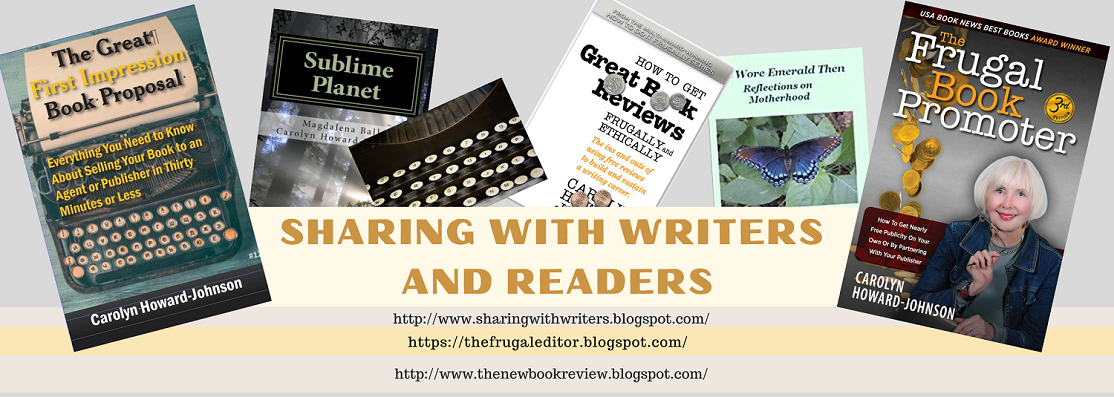Developing Dialogue
by
Valerie Allen
There are no absolute rules about creating good dialogue, but some guidelines help shape a story. Well written dialogue goes unnoticed by the reader because it sounds right. It is not stiff. It is not artificial. It is written to sound as if someone is speaking.
Dialogue has three main functions:
1. Reveal more about a character
2. Establish the relationship of one character to another
3. Move the story forward
Some basic guidelines for using good dialogue include
- Create a new, indented paragraph every time a different character speaks
- If more than one speaker is involved in the conversation use his/her name to clarify who is speaking
- Use the noun-verb form (Valerie said not said Valerie)
- If it is a statement the tag is said (“Valerie is here,” she said.)
- If it is a question, the tag is asked (“Valerie, where are you?” she asked.)
- Use movement, a gesture, or a tag instead of said/asked (Valerie opened the door. “Here I am.”)
- Use vocabulary appropriate to the age, education, and culture of the speaker, as well as the context of the story
- Write conversation as it is spoken, not structured as standard written English
- Dialogue is primarily about what the speaker believes his/her problems or conflicts to be
- Punctuate so it is easily read without confusion
(George, the alligator bit me.
George, the alligator, bit me.
George! The alligator bit me.)
- Do not have characters continuously address each other by name
- Do not have characters giving each other information they already know; use exposition (Not: Valerie, I remember on your birthday, July 20th, we went on a picnic.) Valerie likely knows when her birthday is!
- Avoid dialects; use just a few telltale words to give the flavor of the dialect and then return to standard English
- Contractions make dialogue more natural (It's; I'll; We're)
- Use apostrophes for missing letters (don’t, you’ve, goin’)
- Incomplete sentences are common in dialogue
(“Where are we goin'?”
“Out.”
“Where out?”
“Quiet, or you’re not goin'.”)
Good dialogue should mimic common speech patterns to keep the story believable and fast paced.
~ ~ ~
MORE ABOUT VALERIE ALLEN
Valerie Allen, author, playwright, and speaker, writes fiction, non-fiction, short stories, plays, and children's books. She is a popular speaker at writer's conferences, libraries, and community events using her book: Write, Publish, Sell! Quick, Easy, Inexpensive Ideas for the Marketing Challenged 2nd Edition. http://Amazon.com/dp/1480043850.Amazon.com/dp/1480043850
She is a co-founder of Authors for Authors, which supports new and experienced authors with book fairs, book launches, book displays, and writing seminars. Authors from across the US have had their books displayed at two Florida book fairs held in March and November sponsored by AuthorsforAuthors.com
Valerie Allen can be contacted via FB, Twitter, Google+ and at VAllenWriter@gmail.com or ValerieAllenWriter.com
Carolyn Howard-Johnson, author of This Is the Place; Harkening: A Collection of Stories Remembered; Tracings, a chapbook of poetry; and how to books for writers including the award-winning second edition of, The Frugal Book Promoter: How to get nearly free publicity on your own or by partnering with your publisher; The multi award-winning second edition of The Frugal Editor; and Great Little Last Minute Editing Tips for Writers . The Great First Impression Book Proposal is her newest booklet for writers. She has three FRUGAL books for retailers including A Retailer’s Guide to Frugal In-Store Promotions: How To Increase Profits and Spit in the Eyes of Economic Downturns with Thrifty Events and Sales Techniques. Some of her other blogs are TheNewBookReview.blogspot.com, a blog where authors can recycle their favorite reviews. She also blogs at all things editing, grammar, formatting and more at The Frugal, Smart and Tuned-In Editor .

No comments:
Post a Comment
Thank you for commenting on posts at #SharingwithWriters blog, a Writers Digest 101 Best Websites pick at
www.SharingWithWriters.blogspot.com. You might also find www.TheFrugalEditor.blogspot.com full of resources you can use and
www.TheNewBookReview.blogspot.com, a free review site will benefit your book or increase your reading pleasure.